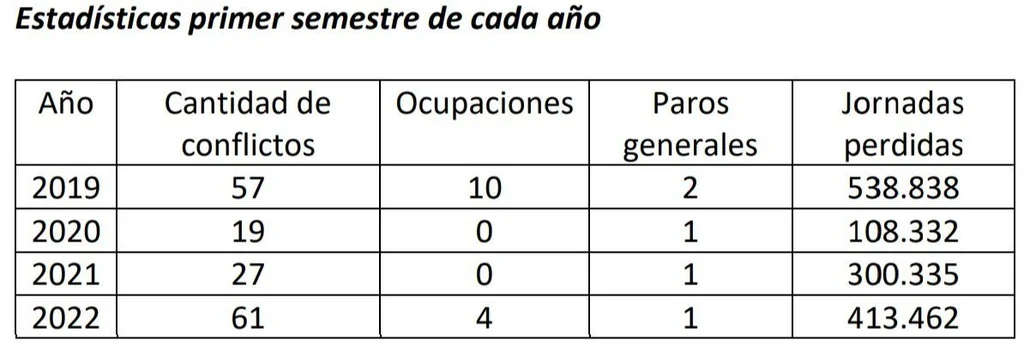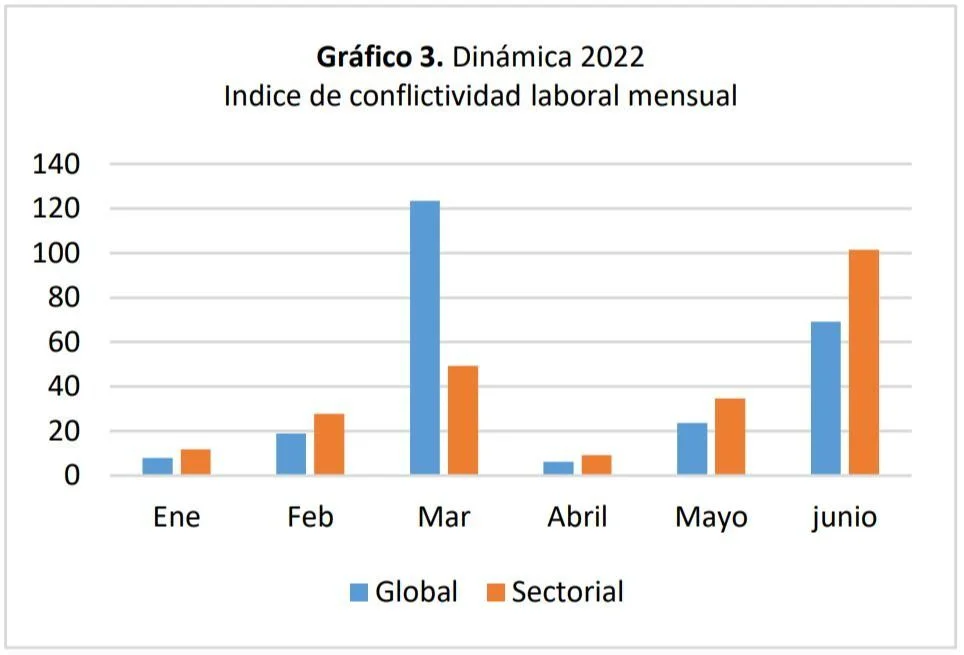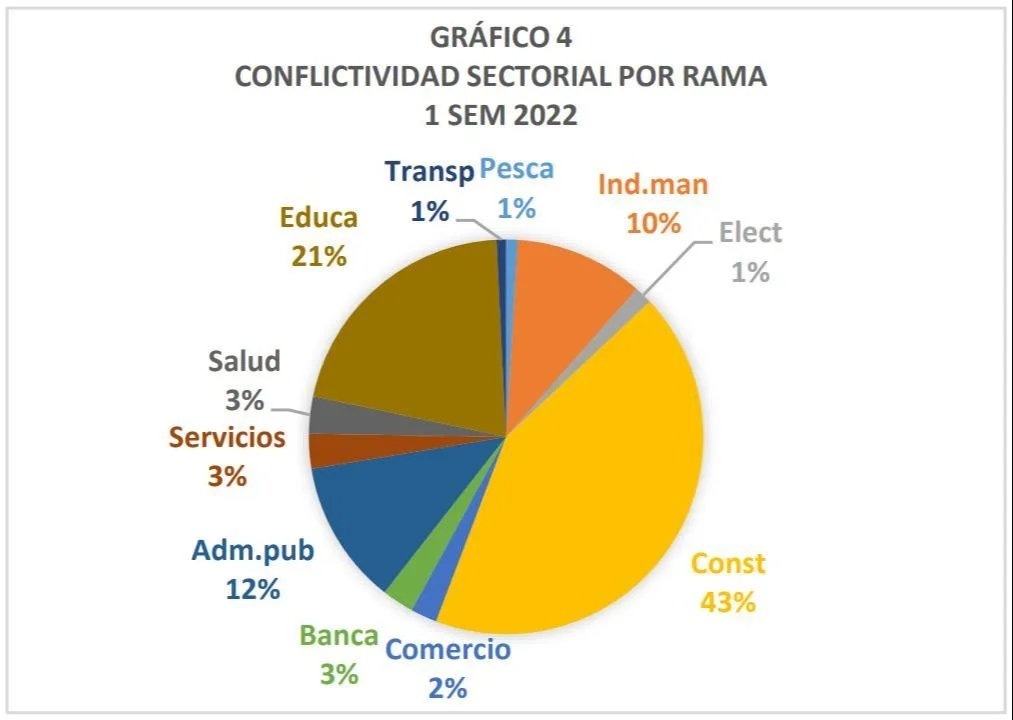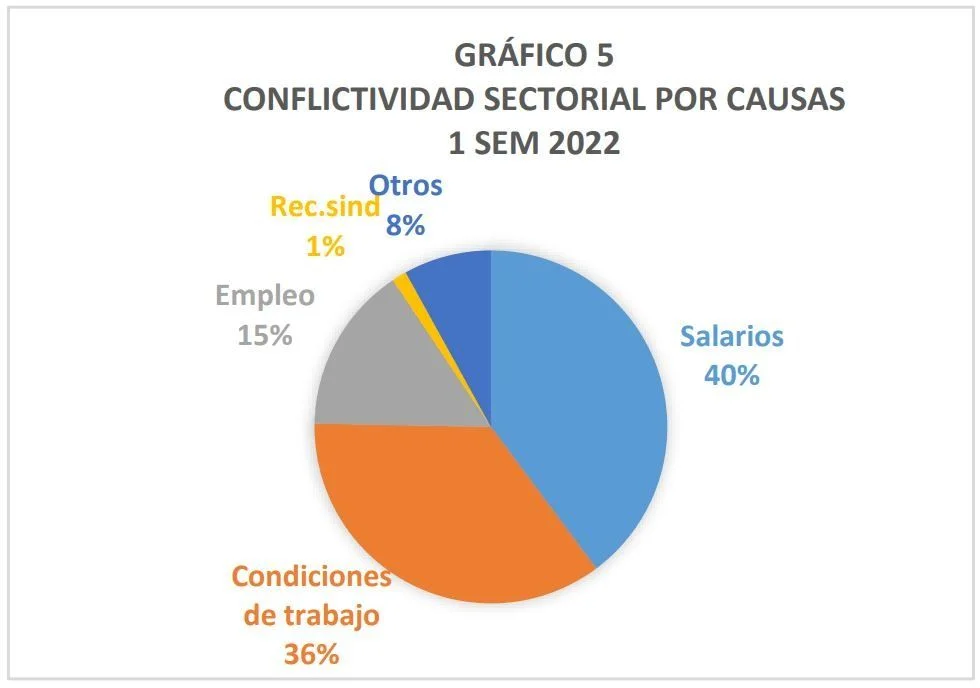Labor unrest had an increase of 45% in the first half of 2022 compared to the same period in 2021. In turn, the sectoral conflict multiplied two and a half times compared to the previous year, according to the latest report prepared by the Department of Organizational Studies of the Catholic University of Uruguay (UCU).
The document emphasizes that although labor conflict was 45% higher as measured by the Global Conflict Index, What is striking is the increase in sectoral conflict, which multiplied two and a half times in relation to the previous year..
In the first half of 2022, the restrictions due to the pandemic were less demanding and in April the health emergency was lifted.
It also shows that it is much higher than in 2020, a year with very low figures due to the pandemic and mobility restrictions, but that it is situated at average levels in relation to normal years.
Department of Organizational Studies of the Catholic University of Uruguay (UCU).
Between January 1 and June 30 there were 61 conflicts with interruption of activities of which one was a general strike (March 8, 24 hours for the repeal of 135 articles of the LUC). In four of them there were occupations of the workplaces (in February the UTU headquarters due to choice of hours, in May at the Dámaso high school in the framework of a strike in rejection of the educational reform and at the La Tablada plant due to the conflict in Riogas where he worked on different days and in June at the UTU del Cerro in the framework of a 24-hour strike for assault on a teacher).
Total Due to these conflicts, 413,462 working days were lost, involving 573,576 workers.

Department of Organizational Studies of the Catholic University of Uruguay (UCU).
According to the UCU report, in 2022 there are two moments that stand out: March with a significant increase in global conflict due to the general strike Y June with a significant increase in sectoral conflict. In the month of June there were 13 conflicts with strikeseven more than one strike in some of them, as in the case of the dairy industry or banking.

Department of Organizational Studies of the Catholic University of Uruguay (UCU).
Construction: the sector with the greatest conflict
Construction was the branch that presented the greatest sectoral conflict -without considering general unemployment- and accounted for 43% of it. To the strike of the entire branch carried out in June, four strikes due to deaths in work accidents were added in the semester.

Department of Organizational Studies of the Catholic University of Uruguay (UCU).
far below, representing 21%, education was located with the general strike, another of secondary school teachers carried out in May for the same cause and several specific strikes in educational centers mainly due to attacks by teachers and officials for demanding more personnel.
Wage claims as the main cause
Claims for wages explained 40% of the sectoral conflict. But in similar figures were located conflicts for better working conditions (36%).

Department of Organizational Studies of the Catholic University of Uruguay (UCU).
The report maintains that in this last case construction conflicts are added due to deaths that are automatic: The day after the accident, a part-time strike is carried out at the national level, and given the occupation of the sector added to the high adherence to strikes, these have a high impact on the statistics.
“This leads us to reflect on whether the only conflicts that occur due to better working conditions are those in construction due to greater safety in the works, or those in educational centers that demand greater security and specialized professionals when a teacher or official is attacked. ”, explains the document.


















